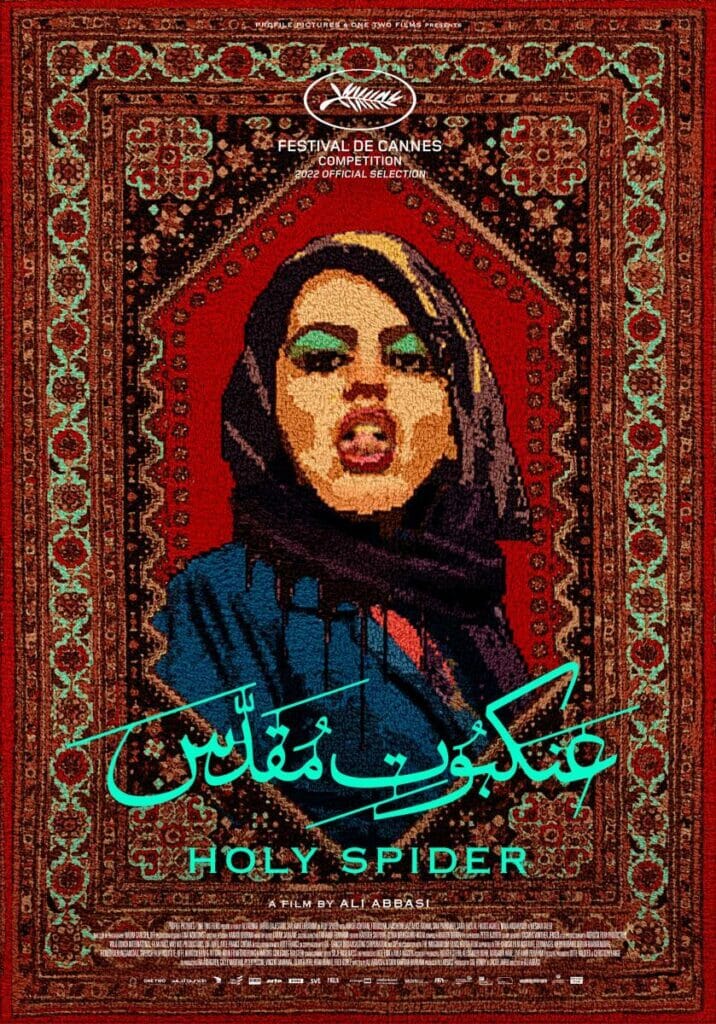
FIN: AIFF Spotlight – Holy Spider
A harrowing account of how truly lonely women are
Holy Spider (2022), directed by Ali Abbasi and shown at the Halifax FIN festival in mid-September, follows female journalist Rahimi (Zar Amir-Ebrahimi). She works to uncover the identity of the man behind the murders of over a dozen women. Based on true events, the film is a jarring portrayal of systematic inequalities, morality and radicalism.
Set in 2001, the film takes place in Mashhad, a holy city in Iran. Holy Spider opens with a woman getting ready in the bathroom, where she then proceeds to kiss her daughter and leave the house. The audience sees her change into high heels and put on makeup in a public bathroom while getting questioning looks from other women. This character is set up as an outsider in the eyes of the audience. She is essentially a prop to set up the story — she is built up and murdered.
The titular murderer is introduced as a loving father and a devout husband. Abbasi’s choice to frame Saeed (Mehdi Bajestani) as this solid family man only works to add dimension to his character. He is shown as a complex man with complex intentions and ideas, as he was in real-life accounts. Saeed is not a bloodthirsty killer. He’s a man of ideals, however radical they may be. Holy Spider underlines these intricacies as it cuts from him spending time with his family to him cruising the streets at night to find his next target.

Story of Rahimi
Throughout the film there’s a sense of dread hanging over the theatre — not necessarily because of what’s shown on the screen, but rather because of what’s implied between the lines, in split-second snapshots.
While Peter Bradshaw from The Guardian calls this film “rather Hollywoodised,” Holy Spider stands more real than any Hollywood film based on real-life events. It’s no secret Abbasi made choices to omit parts of the source material, but did so with intention. In an interview, the director admits he found Saeed particularly interesting when watching And Along Came a Spider (2002), because “he had no media training. He said things on camera that were against his own interest. But he seemed happy and at peace with his crimes.”
Regardless, the main character in the film isn’t Saeed; it’s Rahimi. The journalist is fictitious and seemingly an ode to the last woman who Saeed tried to kill. She is introduced as a headstrong, outspoken and clever woman from the start. Rahimi, as a character, is a tool for Abbasi to strengthen his exploration of misogyny and dehumanization. Rahimi is constantly ignored, diminished, or subject to harassment and abuse from men around her. She is written to show how societal norms work to single out and isolate women so they have no choice but to conform or be shunned from society.
Rahimi’s story arc consists solely of her trying to do her job and getting asked questions based on her gender. That said, she is written to persevere. In the film, she is portrayed as the sole reason for the murderer being caught. She is how the audience gets to see how the victims’ parents are coping, as well as how the victims were perceived. With her in the centre of the story, Abbasi connects better with his female audience, exploring how a woman is forced to recognize and resolve conflicts within herself, her social circles and society.
In his Director’s Note for Cannes, Abbasi says “Hanaei’s victims were not generic street women. They were individuals with their own personalities and we hope to restore a part of their dignity and humanity that was taken from them. Not as saints, not as unfortunate victims, but as human beings, like all of us.”
His statement underlines how women, especially those subject to this film, are often seen as the other and dehumanized to drive people’s attention away from the problem. This story is not exceptional in Iran, or even the Middle East. Hundreds of women die or go missing every day and realistically, most of their names go unheard. This film, the story it’s based on and a handful of other incidents are lucky to catch media attention. That said, the only way to talk about the ones who have not is by namelessly calling them “the others.”






